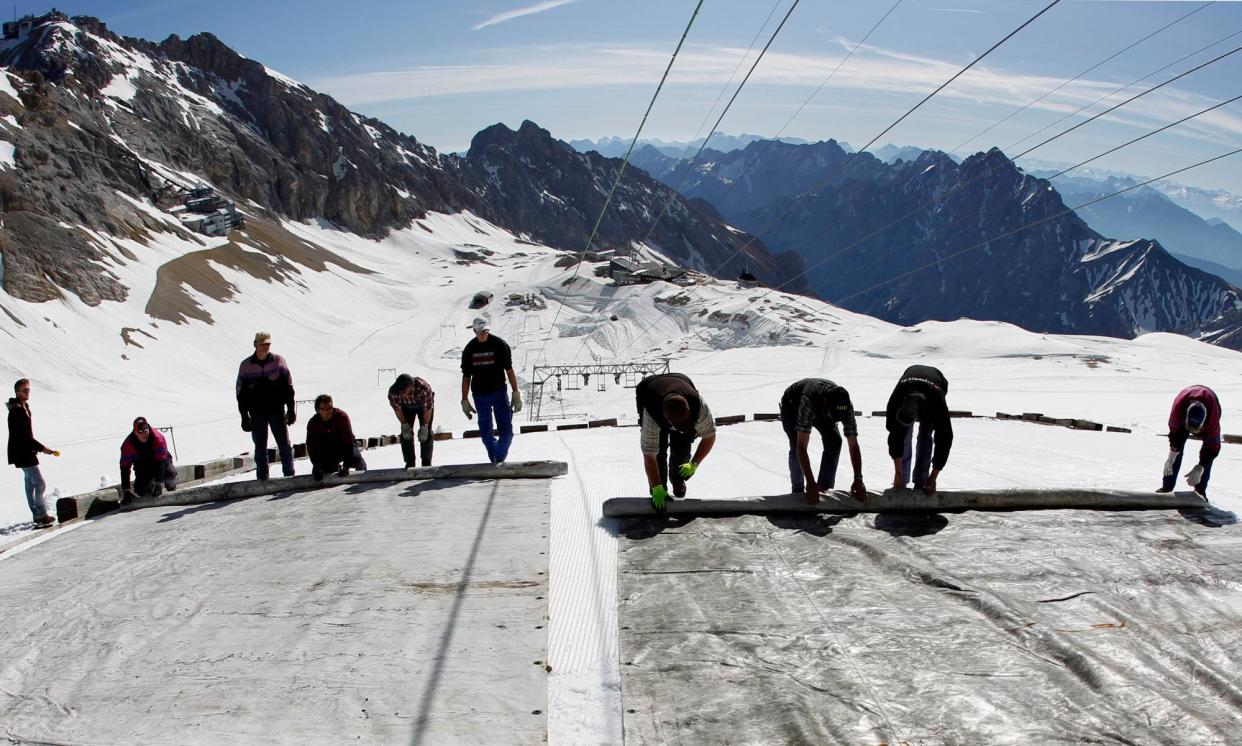Effects of geoengineering must be urgently investigated, experts say

Scientists must work urgently on predicting the effects of climate geoengineering, the chief of the US atmospheric science agency has said, as the technology is likely to be needed, at least in part.
Richard Spinrad, administrator of the National Oceanic and Atmospheric Administration (NOAA), said the government-backed body was estimating the effects of some of the likely techniques for geoengineering, including those involving the oceans.
“My own belief is that we need to get a better understanding of what the impacts are,” he said. “I suspect some aspects of geoengineering are going to be an important component of the solution to reducing global warming, and all of the impacts of global climate change, like ocean acidification.”
Potential geoengineering techniques include seeding the oceans with iron to absorb more carbon dioxide, or spraying water from the oceans into low-level clouds to reflect some of the sun’s radiation.
Spinrad said understanding the potential impact of geoengineering on the oceans was vital. “If we were to undertake an effort in some things like iron fertilisation [of the oceans], what are the consequence to the ecosystem of doing that? [Also important is] building good predictive models … and supporting decision-makers,” he said.
NOAA is focusing on the potential for the oceans to sequester CO2, a process known as marine carbon dioxide removal.
The agency’s researchers are also working closely with universities and government scientists in the UK on the potential for the shutdown of the systems driving the Gulf Stream ocean currents. Evidence has recently been presented that the Atlantic Meridional Overturning Circulation (Amoc) may be rapidly weakening, over decades rather than centuries, under the impact of heating oceans and melting ice, and its shutdown could be catastrophic for Europe and other regions.
Spinrad said: “We should be concerned enough to keep an eye on what the science is telling us. Amoc is not going to shut down tomorrow. But systems like Amoc are inherently noisy. By that I mean, don’t just look at how it’s changed from 2023 to 2024. We need to observe these systems over a long period of time.
“As an oceanographer, I’m concerned enough to say this should be a priority for sustained observations. And I think it’s in the next three to five years we should be getting the best idea of whether we’re seeing a real trend.”
Spinrad defended NOAA against the threat, raised by some in the US Congress, of rescinding some of the $6bn (£4.7bn) the agency is receiving under Joe Biden’s Inflation Reduction Act.
He said that whatever the outcome of the presidential election this November, in which the climate is likely to be a bitterly divisive issue, strong climate science would be needed to protect the security of US citizens. Wildfires have caused widespread devastation across the US in the past year, and rising temperatures and extreme weather have been felt across the country.
“These missions [that NOAA pursues] are not inherently political by any means,” he told a small group of journalists at the US embassy in London. “They are affecting all aspects of security: the traditional interpretations, such as national security, homeland security – but also food security, energy security, water security, economic security. These are not issues that need to be addressed on a political schedule, they are issues that every American citizen, industry and community assumes their taxes will support, regardless of who’s in the administration.”
Spinrad pointed out that US citizens were increasingly conscious of the effects of the climate crisis. “They’re certainly feeling it in their pocketbook,” he said. “We’re all paying for the effects of fires that are now hitting. We saw $28bn in disasters in the US last year, more than we’ve ever seen before. We’re all paying for that. I’m paying for that when I pay my insurance. Consequently, I think the American public is getting it, and understanding it. And that map of billion-dollar disasters, it does not align with the political map in any way.”


